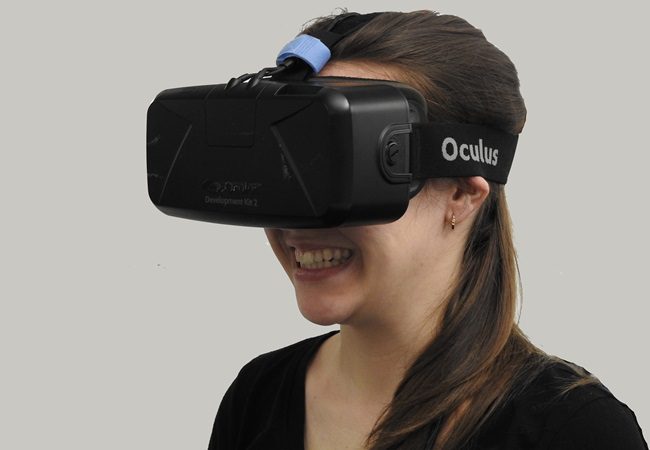Introduction:
In the dynamic landscape of healthcare, Virtual Reality (VR) has emerged as a groundbreaking technology, ushering in a new era of patient care and professional training. The immersive capabilities of VR have paved the way for transformative experiences, offering unprecedented opportunities to enhance medical treatments, improve patient outcomes, and revolutionize the way healthcare professionals are trained.
Transforming Patient Care:
Personalized Therapeutic Interventions:
Virtual Reality is making significant strides in personalized therapeutic interventions. Patients facing chronic pain, anxiety, or undergoing rehabilitation can now benefit from immersive VR experiences that go beyond traditional treatments. VR distracts patients from pain, reduces anxiety levels, and facilitates a more relaxed state during medical procedures. This personalized approach not only enhances the patient experience but also contributes to better mental well-being and, ultimately, improved treatment outcomes.
Virtual Reality in Exposure Therapy:
The application of VR in exposure therapy is particularly noteworthy. For patients dealing with phobias, post-traumatic stress disorder (PTSD), or anxiety disorders, VR offers a controlled and safe environment for exposure. Therapists can gradually expose patients to stimuli that trigger their symptoms, allowing them to confront and manage their fears in a virtual setting. This therapeutic use of VR has shown promising results in desensitization and coping mechanisms.
Surgical Planning and Simulation:
In the realm of surgery, Virtual Reality is proving to be a game-changer. Surgeons can now utilize VR for preoperative planning and simulation, providing a detailed and immersive view of the patient’s anatomy. This virtual walkthrough enhances surgical precision, reduces the risk of complications, and allows surgeons to familiarize themselves with the specific nuances of each case before entering the operating room. The result is improved surgical outcomes and a safer, more efficient healthcare environment.
Training Healthcare Professionals:
Realistic Medical Simulations:
Virtual Reality is revolutionizing the training of healthcare professionals by offering realistic medical simulations. Medical students and practitioners can engage in immersive scenarios that replicate real-life situations, from emergency room procedures to complex surgeries. These simulations provide a safe environment for learning and refining skills, allowing professionals to practice and hone their abilities without putting patients at risk.
Virtual Anatomy Exploration:
Traditionally, medical students relied on textbooks, cadavers, and 2D images to understand human anatomy. VR changes the game by enabling virtual anatomy exploration in three-dimensional space. Students can dissect virtual bodies, explore organs, and visualize complex anatomical structures in ways that were previously unimaginable. This hands-on experience enhances comprehension and retention, providing a solid foundation for medical education.
Remote Training and Collaboration:
The global nature of healthcare demands innovative solutions for remote training and collaboration. Virtual Reality bridges geographical gaps by allowing healthcare professionals to engage in collaborative training sessions regardless of their physical location. This not only facilitates knowledge exchange but also ensures that medical practices and standards are harmonized on a global scale, contributing to the continuous improvement of patient care worldwide.
Addressing Mental Health Challenges:
Virtual Reality Therapy for Mental Health:
Mental health is a critical aspect of overall well-being, and Virtual Reality is proving to be a valuable tool in mental health therapy. VR environments can simulate scenarios that help individuals confront and manage conditions such as anxiety, depression, and PTSD. Therapists can guide patients through tailored VR experiences, providing a safe space for gradual exposure and therapeutic interventions.
Stress Reduction for Healthcare Professionals:
Healthcare professionals often face high levels of stress and burnout. Virtual Reality offers stress reduction programs designed specifically for medical practitioners. These programs incorporate mindfulness exercises, relaxation techniques, and immersive environments that allow healthcare professionals to unwind and recharge. By addressing the mental health needs of healthcare workers, VR contributes to a more resilient and compassionate healthcare workforce.
Overcoming Accessibility Barriers:
Virtual Home Healthcare:
The future of healthcare includes innovative solutions for delivering medical services to patients in the comfort of their homes. Virtual Reality plays a pivotal role in telehealth by creating virtual home healthcare experiences. Patients can receive consultations, therapy sessions, and even monitoring through VR platforms, eliminating the need for physical visits and providing accessible healthcare options, especially for individuals in remote or underserved areas.
Patient Education through VR:
Educating patients about their conditions and treatment plans is crucial for effective healthcare. Virtual Reality offers a novel approach to patient education by creating immersive experiences that explain medical procedures, conditions, and treatment options. This visual and interactive method enhances patient understanding, encourages engagement, and empowers individuals to actively participate in their healthcare journey.
Future Prospects and Considerations:
Wearable VR Devices in Healthcare:
The integration of Virtual Reality into wearable devices is a promising avenue for the future of healthcare. Wearable VR devices can monitor vital signs, provide real-time health data, and even deliver personalized therapeutic interventions. This convergence of technology holds the potential to enhance preventive healthcare and empower individuals to take an active role in managing their well-being.
Ethical Considerations in VR Healthcare:
As Virtual Reality becomes more prevalent in healthcare, ethical considerations come to the forefront. Moreover, privacy concerns, data security, and informed consent are crucial aspects that must be addressed to ensure the responsible development and implementation of VR in healthcare. Additionally, striking a balance between technological innovation and ethical principles is essential to build trust and ensure the ethical use of VR in the healthcare domain.
Conclusion:
Virtual Reality is ushering in a paradigm shift in healthcare, both in patient care and professional training. From personalized therapeutic interventions and surgical simulations to mental health therapy and remote healthcare solutions, VR is redefining the way we approach health and well-being. As we navigate the future, the responsible and ethical integration of Virtual Reality into healthcare will play a pivotal role in shaping a more accessible, patient-centric, and technologically advanced healthcare landscape.

































